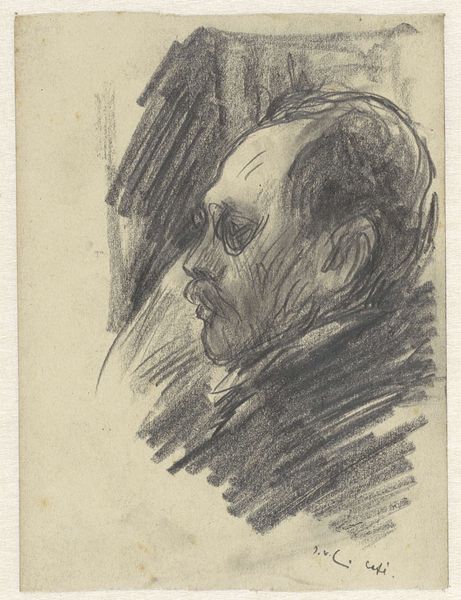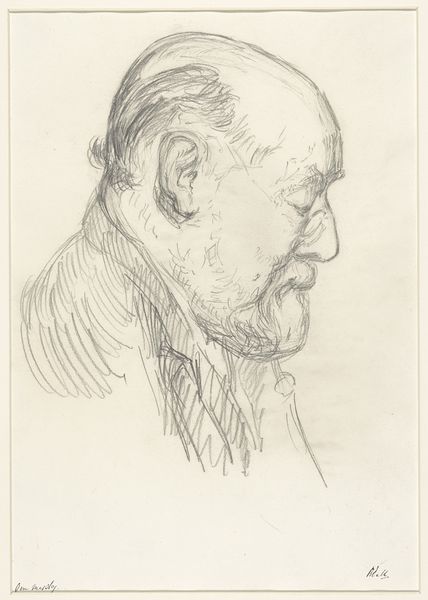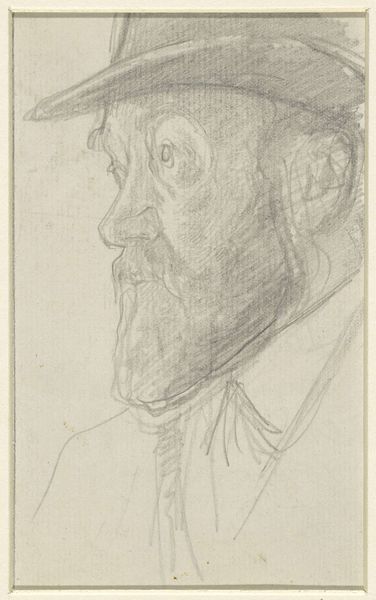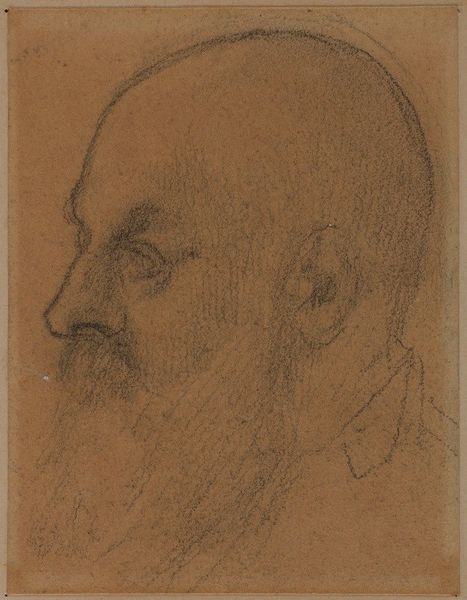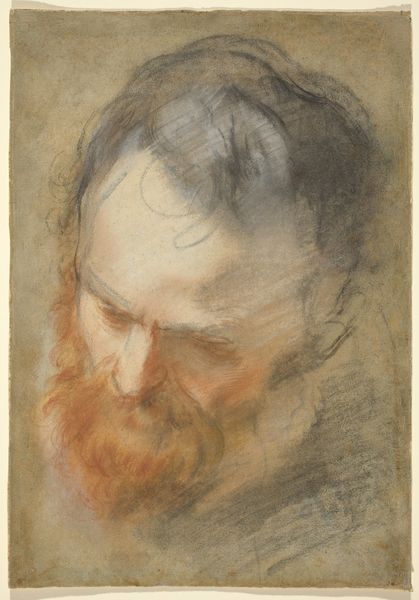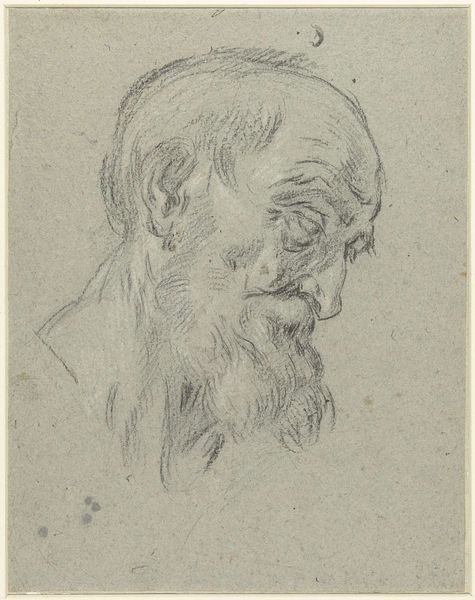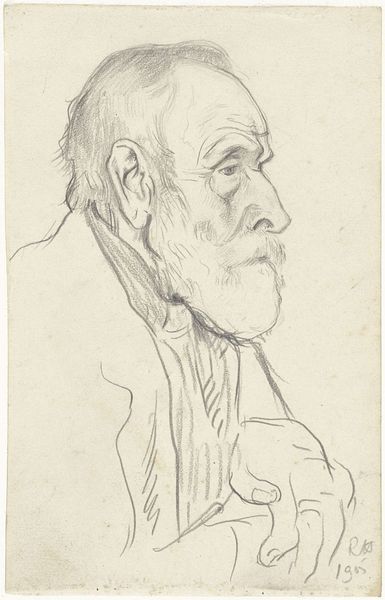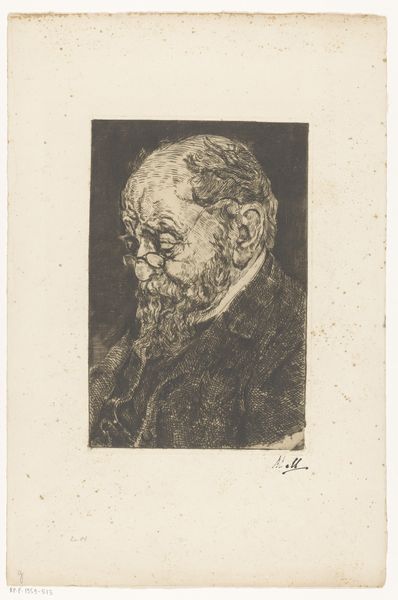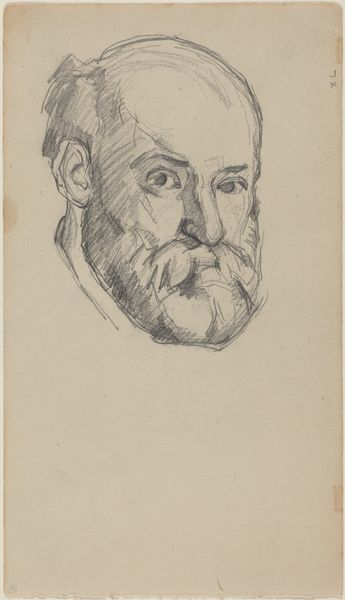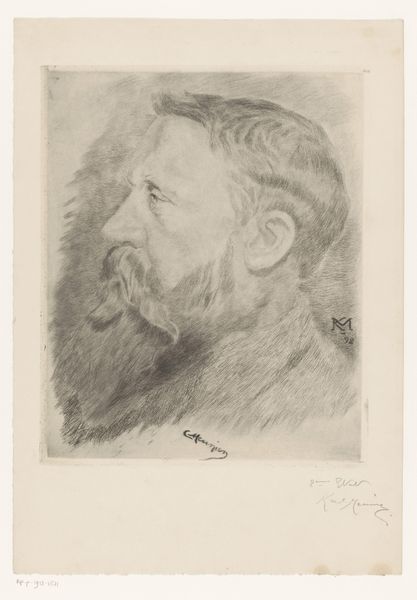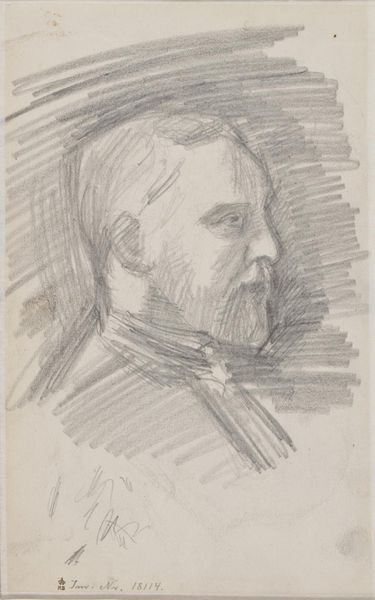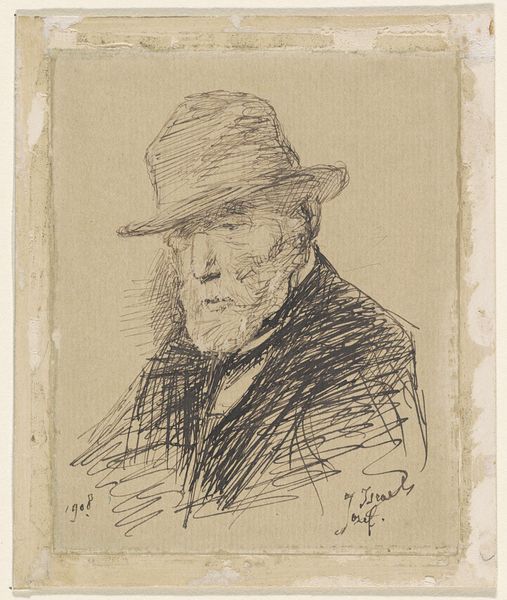
drawing, dry-media, graphite, charcoal, pastel
#
portrait
#
pencil drawn
#
drawing
#
charcoal drawing
#
dry-media
#
pencil drawing
#
sketch
#
graphite
#
portrait drawing
#
charcoal
#
pastel
Dimensions: height 171 mm, width 126 mm
Copyright: Rijks Museum: Open Domain
Curator: Before us we have a compelling drawing, "Portret van Jozef Israëls," a work executed circa 1884-1911, attributed to Jan Veth, here at the Rijksmuseum. Editor: It’s a somber, almost melancholic portrait. The sketch-like quality, the charcoal strokes left quite visible, creates a raw, unfinished feel that adds to the mood. Curator: Indeed. Veth has employed a variety of dry media – graphite, charcoal, possibly some pastel – to create depth and shadow. Observe the contrast between the roughly sketched background and the more carefully rendered face. Editor: The sitter’s gaze is averted, thoughtful. The spectacles, however, give him an intellectual air, connecting him to the world of ideas. It prompts reflection about the artistic and political contexts of his time. Who was Jozef Israëls? How was he perceived? Curator: Jozef Israëls was a highly regarded painter of the Hague School, known for his realistic depictions of Dutch peasant life. Veth, also an artist and critic, likely knew Israëls within the Dutch art scene. This portrait is then also about paying tribute. Editor: A visual marker of the dynamics of that artistic community! I see the subtle social power, the critical reception, all captured in these lines. But consider also, formally, how the composition leads our eye, note how all of the shading creates a system of meaning. Curator: Notice also, the play of light and shadow, it guides our eye around the composition but adds also to the psychological intensity. The face seems to emerge from the darkness, emphasizing the character and presence. Editor: I wonder about the intentionality. Was this preparatory sketch, an informal study, or a more deliberately considered piece to circulate among peers? This piece can be more of an act of building relationships than we think at first. Curator: Perhaps it functioned as both, capturing the essence of the man while also serving as an exercise in form and technique. It highlights Veth’s mastery of capturing likeness with minimal means. Editor: It’s a powerful reminder how portraits always negotiate power and relationships in art world history. And also an elegant example of rendering light and dark to amplify meaning. Curator: I agree. Its suggestive use of shading creates a lingering image of memory. Editor: It’s this dynamic tension of skill, mood and socio-political that keeps this portrait vibrant.
Comments
No comments
Be the first to comment and join the conversation on the ultimate creative platform.
